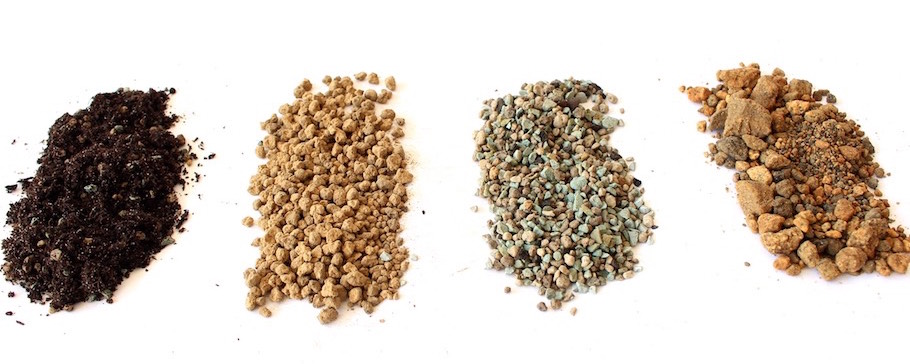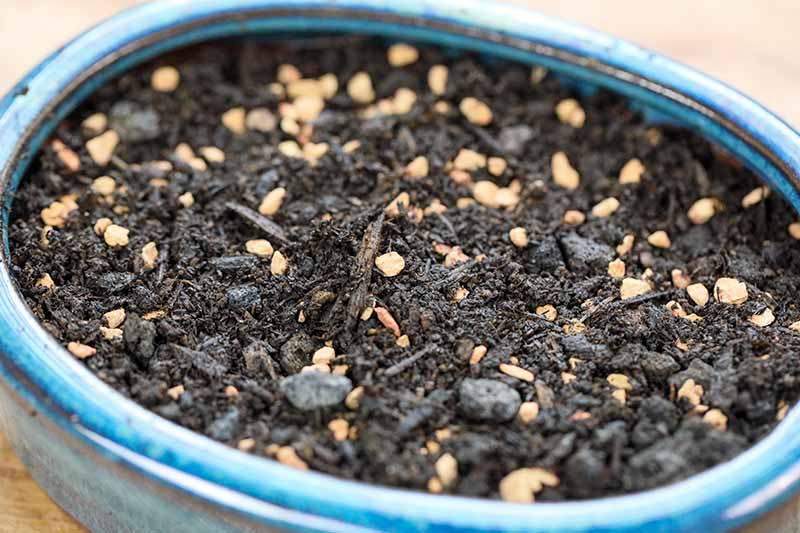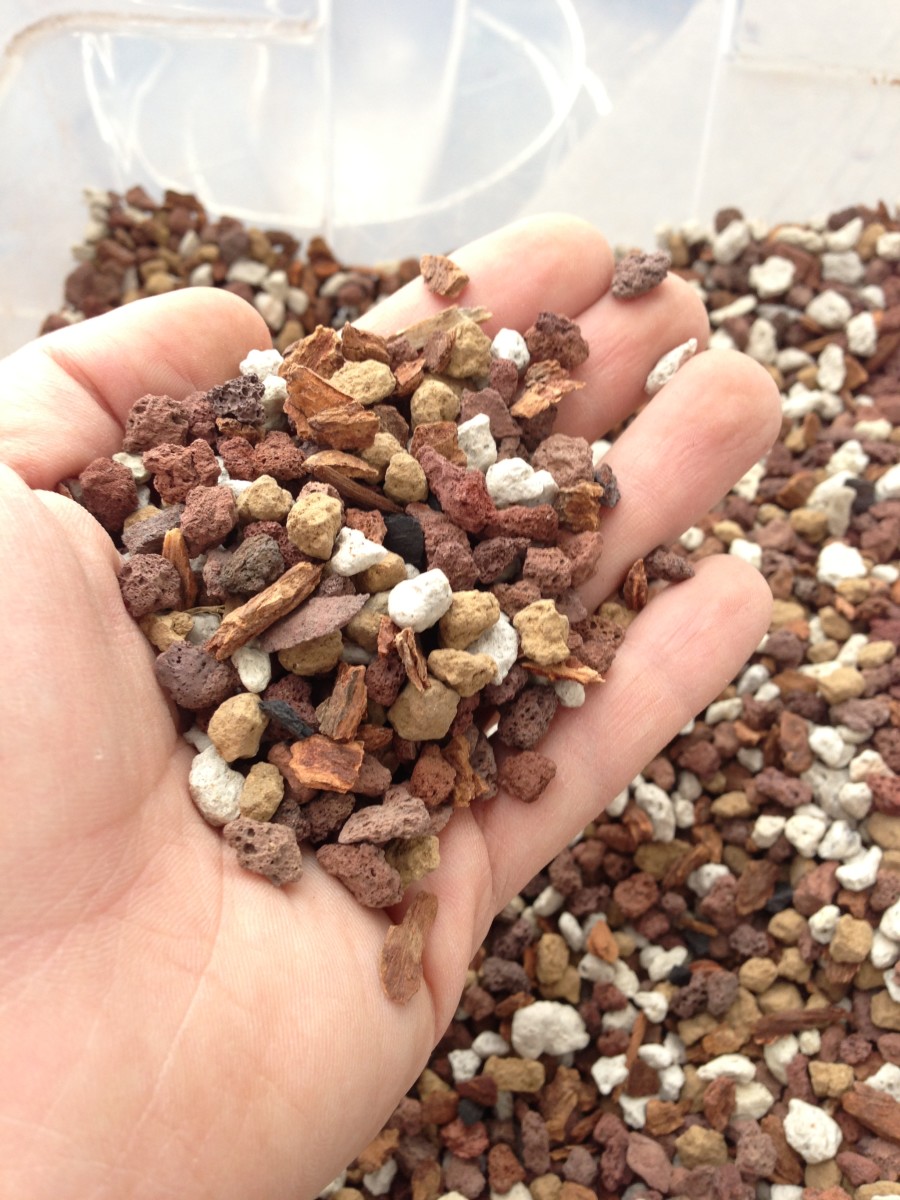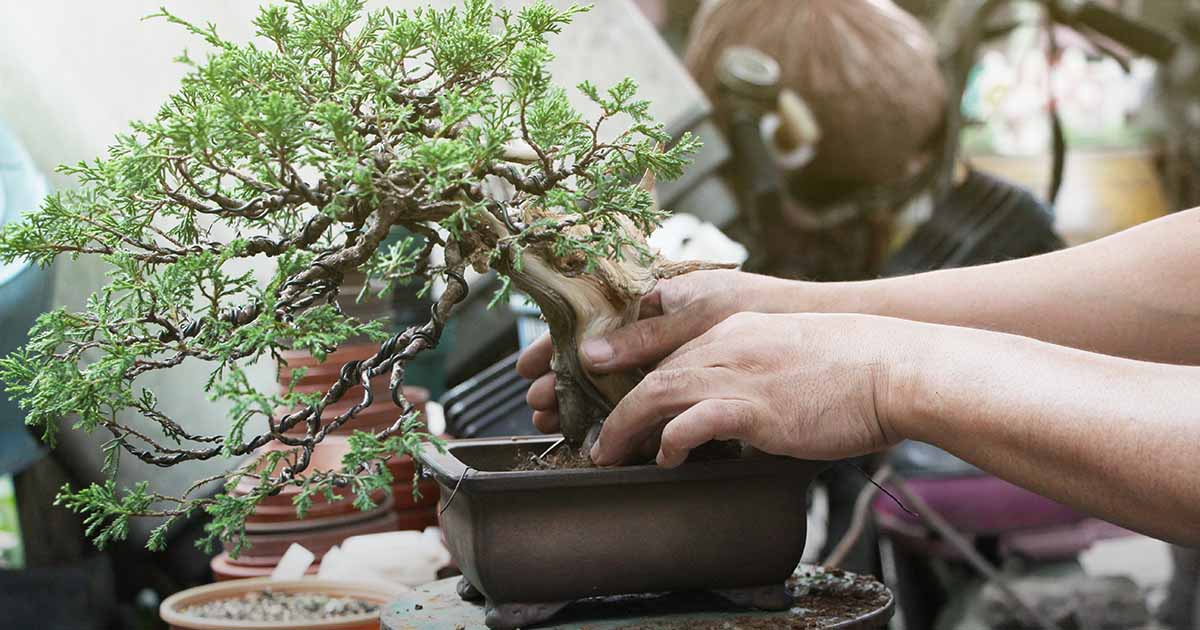Detailed Notes on Organic or Inorganic Bonsai Soils
If you've ever been captivated because of the artwork of bonsai, you may be wondering if Particular soil is needed to cultivate these miniature masterpieces. The answer is Certainly! Specific soil is important for the overall health and vitality of bonsai trees.In this article, we'll investigate the different sorts of soil and substrates used in bonsai cultivation, together with natural and inorganic alternatives.
We are going to also find out recommended soil mixtures for numerous bonsai species, including deciduous, coniferous, and indoor kinds. From akadama and pumice to moss and river sand, we'll dive in the fascinating entire world of bonsai soil and assist you understand why It can be an essential Component of cultivating these exquisite trees.

Bonsai soil
What is bonsai soil?
Bonsai soil is a specialized type of soil that is specifically formulated for growing and maintaining bonsai trees. Unlike regular garden soil, bonsai soil is well-draining and provides the necessary nutrients and moisture balance for the tree's root system. The composition of bonsai soil is carefully designed to meet the unique needs of bonsai trees, ensuring their health and longevity.
The importance of bonsai soil
The choice of soil plays a crucial role in the success of your bonsai tree. The right soil provides optimal drainage, allowing excess water to flow freely and preventing root rot. It also promotes a healthy and well-developed root system, which is essential for the overall health and growth of the tree. Bonsai soil retains moisture while allowing air to reach the roots, striking the perfect balance for the tree's needs. Choosing the right bonsai soil is essential for maintaining a healthy and thriving bonsai tree.
Bonsai substrates
What are bonsai substrates?
Bonsai substrates refer to the different materials that can be used to create the ideal soil composition for bonsai trees. These substrates are carefully chosen to meet the specific needs of different species of bonsai trees and to ensure proper water drainage and nutrient availability.
Different types of bonsai substrates
There are various types of bonsai substrates available, each with its own unique characteristics and benefits. Some common bonsai substrates include:
- Organic materials: These include ingredients such as bark, peat moss, and coconut coir. Organic substrates help retain moisture and provide essential nutrients to the bonsai tree.
- Inorganic materials: These include things like factors like pumice, lava rock, and akadama. Inorganic substrates deliver superb drainage, ensuring that excessive h2o would not accumulate around the roots from the bonsai tree.
- Soil amendments: They're substances which have been additional on the soil mixture to enhance its Attributes. Examples of soil amendments consist of perlite, vermiculite, and sand. They Increase the soil's aeration, h2o-holding capacity, and nutrient availability.
By understanding the different types of bonsai substrates and their Houses, it is possible to choose the most suitable just one on your bonsai tree's needs.
Organic and natural or Inorganic Soils
Organic soils for bonsai
Natural and organic soils for bonsai are made up of natural products for example bark, peat moss, coconut coir, and compost. These supplies give a prosperous supply of nutrients with the bonsai tree and market healthful root improvement. Organic and natural soils also have superior drinking water retention properties, guaranteeing that the tree gets adequate dampness in between watering classes. Even so, it is important to notice that natural soils may perhaps break down over time and turn into compacted, leading to inadequate drainage and prospective root concerns.
Inorganic soils for bonsai
Inorganic soils for bonsai encompass components like pumice, lava rock, akadama, and soil amendments like perlite or vermiculite. These products have outstanding drainage Houses, preventing waterlogged soil and advertising and marketing aeration across the roots. Inorganic soils are most popular by several bonsai fans due to their longevity and talent to offer a stable atmosphere with the bonsai tree's root program. Nevertheless, They could call for extra Regular watering and extra fertilization, as they do not maintain as much moisture or nutrients as organic soils.
Advantages and drawbacks of making use of organic and natural and inorganic soils for bonsai
Choosing involving organic and natural and inorganic soils for the bonsai tree depends upon many factors, such as the specific species of tree, your weather, and private Tastes. Listed here are the benefits and drawbacks of each:
Natural soils:
- Pros: Provide nutrients, fantastic h2o retention, boost healthful root progress.
- Drawbacks: May well break down eventually, possible for very poor drainage if not appropriately maintained.
Inorganic soils:
- Professionals: Fantastic drainage, very long-lasting, steady ecosystem for roots.
- Cons: A lot less drinking water retention, may demand far more Recurrent watering and fertilization.
By thinking of the benefits and drawbacks of equally organic and natural and inorganic soils, you can make an educated decision depending on the specific desires within your bonsai tree.
Soil parts
Key components of bonsai soil
Bonsai soil is typically made up of three key factors: grit, natural issue, and clay. These elements perform jointly to build the ideal soil construction to the bonsai tree's root technique.
- Grit: Grit, including sand or perlite, gives drainage and aeration in the soil. It can help protect against waterlogging and will allow air to get to the roots.
- Organic make any difference: Organic subject, for instance compost or bark, presents nutrients into the bonsai tree. In addition it will help keep moisture and Enhance the soil's Over-all composition.
- Clay: Clay particles deliver some h2o retention attributes and support bind the soil jointly. Having said that, an excessive amount of clay can cause very poor drainage and compaction.
Function of every soil ingredient
Each soil part plays an important purpose in developing a effectively-balanced and healthful ecosystem for that bonsai tree's roots.
- Grit: Grit gives the mandatory drainage and aeration inside the soil. It stops the roots from sitting in stagnant water, minimizing the potential risk of root rot and endorsing overall root overall health.
- Natural and organic matter: Natural and organic subject delivers necessary nutrients on the bonsai tree. It aids in moisture retention and contributes to the general framework of your soil.
- Clay: Clay particles help bind the soil with each other and provide some h2o retention ability. Nonetheless, it's important to equilibrium the amount of clay to stop troubles like bad drainage and compaction.
By understanding the roles of every soil component, you could produce a well balanced bonsai soil combine that meets the precise wants of your tree.

Recommended Bonsai soil mixtures
Common bonsai soil mixtures
There are several common bonsai soil mixtures that have been proven effective for various types of bonsai trees. These mixtures typically consist of a combination of inorganic substrates, organic matter, and soil amendments.
Some of the commonly used bonsai soil mixtures include:
- Akadama, pumice, and lava rock: This mixture is popular among bonsai enthusiasts for its excellent drainage and water retention properties.
- Akadama, lava rock, and natural and organic issue: This mixture brings together the main advantages of inorganic substrates Together with the nutrient-wealthy Attributes of natural make any difference.
- Pumice, perlite, and bark: This mixture presents very good drainage and aeration though retaining some humidity and furnishing nutrients.
These are typically only a few samples of bonsai soil mixtures, and the ideal combination will depend on the particular needs of the bonsai tree along with your local climate.
Aspects to consider when deciding on a bonsai soil mixture
When deciding on a bonsai soil mixture, it is important to contemplate the subsequent aspects:
- Species of bonsai tree: Distinctive species have distinct humidity and nutrient demands. Analysis the precise requirements of one's tree to pick a soil combination that fulfills its needs.
- Climate: The local weather you reside in can impact the humidity retention Attributes on the soil. Think about the average humidity and temperature in your town When picking a soil combination.
- Watering behavior: Your own watering patterns and schedule ought to align with the soil combination you end up picking. Some mixtures need far more Recurrent watering, while some keep dampness for longer intervals.
- Finances: Some soil components could be costlier than Some others. Think about your funds when deciding upon a soil mixture.
By using these variables under consideration, you can select a bonsai soil combination that gives the top escalating situations on your tree.
Deciduous Bonsai soil
Very best soil composition for deciduous bonsai
Deciduous bonsai trees, which include maple or birch, have certain soil demands to support their growth and wellbeing. The best soil composition for deciduous bonsai generally includes a mixture of natural and organic subject, inorganic substrates, and soil amendments.
A suggested soil composition for deciduous bonsai could incorporate:
- Akadama: Presents very good drinking water retention although making it possible for for drainage. In addition, it releases nutrients little by little eventually.
- Pumice: Promotes aeration and drainage inside the soil, avoiding waterlogging.
- Bark or peat moss: Provides organic subject to the soil, delivering nutrients and moisture retention.
This soil composition ensures that the roots of deciduous bonsai trees obtain the appropriate harmony of humidity, nutrients, and oxygen for ideal growth.

Coniferous and Pine soil
Ideal soil mixture for coniferous and pine bonsai
Coniferous and pine bonsai trees have specific soil requirements due to their water retention needs and preference for acidic soil. An ideal soil mixture for coniferous and pine bonsai should provide good drainage while retaining moisture and maintaining the desired pH level.
A recommended soil mixture for coniferous and pine bonsai may include:
- Akadama: Provides excellent water retention while allowing for sufficient drainage. It releases nutrients slowly over time.
- Pumice: Encourages aeration and drainage from the soil, blocking waterlogged roots.
- Peat moss: Adds natural matter and acidity on the soil, making a super pH amount for coniferous and pine trees.
This soil mixture makes certain that the roots of coniferous and pine bonsai trees acquire the ideal equilibrium of dampness, nutrients, and acidity for his or her specific requires.
Akadama
What is akadama?
Akadama is usually a variety of clay soil which is extensively used in bonsai cultivation. It's recognized for its excellent drinking water retention Houses, which assure a steady provide of humidity to your bonsai tree's roots. Akadama can also be prized for its ability to release nutrients little by little with time, supplying a regular supply of nourishment to the tree.
Benefits of applying akadama in bonsai soil
Using akadama in bonsai soil features a number of Gains:
- Water retention: Akadama has Excellent drinking water retention Houses, allowing it to hold moisture without the need of turning out to be waterlogged. This ensures that the bonsai tree's roots receive a regular supply of water, marketing healthier advancement.
- Nutrient launch: Akadama little by little releases nutrients to the soil after some time, providing a consistent source of nourishment for your bonsai tree. This lessens the necessity for Repeated fertilization and can help retain a well balanced nutrient profile.
- Aeration: Irrespective of its water retention abilities, akadama also presents adequate aeration towards the bonsai tree's roots. It permits air to reach the root method, stopping concerns including root rot as a result of insufficient oxygen.
By incorporating akadama in to the bonsai soil, you are able to produce an best escalating setting to your tree, making certain its health and vitality.

Lava rock
How lava rock benefits bonsai soil
Lava rock is a popular component in bonsai soil mixtures due to its excellent drainage and aeration properties. It is typically used in conjunction with other substrates to create the ideal soil composition for bonsai trees.
The benefits of lava rock in bonsai soil include:
- Drainage: Lava rock provides excellent drainage, preventing waterlogging and ensuring that excess water flows freely through the soil. This helps prevent root rot and provides a healthy environment for the roots to thrive.
- Aeration: The porous nature of lava rock will allow air to flow into within the soil, furnishing oxygen to your bonsai tree's root technique. Correct aeration is crucial for nutritious root growth and All round tree growth.
- Longevity: Lava rock is usually a long lasting materials that doesn't break down easily. This makes certain that the soil composition stays secure over time, lessening the need for Recurrent soil replacements.
Lava rock is offered in various sizes and styles, permitting for personalisation determined by the specific demands of one's bonsai tree and soil needs.
Different types of lava rock
You will find differing kinds of lava rock that can be Utilized in bonsai soil mixtures, including:
- Black lava rock: Black lava rock is often a generally utilised material in bonsai soil mixtures. It provides fantastic drainage Qualities and provides an aesthetic ingredient to the general presentation with the bonsai tree.
- Crimson lava rock: Red lava rock is an additional preferred selection in bonsai soil mixtures. It provides similar drainage and aeration Positive aspects as black lava rock but has a definite reddish coloration that adds visual curiosity to your container.
Both black and red lava rocks are broadly obtainable and may be conveniently integrated into your bonsai soil combination.
Potting
Necessary tips for productive bonsai potting
Potting is often a significant process in bonsai cultivation, since it instantly impacts the well being and advancement from the tree's roots. Here are several critical tips for effective bonsai potting:
- Select the suitable pot sizing: Select a bonsai pot that allows for root development although even now delivering a comfortable match. Stay away from pots which might be far too substantial, since they may lead to extreme soil humidity and weak root development.
- Use bonsai wire: Protected the tree in the pot using bonsai wire to ensure stability. This helps prevent the tree from shifting or starting to be uprooted all through watering or potent winds.
- Trim and spread the roots: Before potting the bonsai tree, carefully trim and distribute out the roots. This encourages outward expansion and stops root tangling or root-bound issues.
- Increase mesh screens: Position mesh screens about the drainage holes at the bottom from the pot to prevent soil erosion and be certain right drainage.
- Use clean bonsai soil: When potting, often use fresh new bonsai soil to offer the required nutrients and optimum growing disorders for that roots.
By adhering to these essential tips, you could guarantee a successful potting procedure and endorse the general well being and advancement within your bonsai tree.
The role of bonsai pots in soil moisture Handle
Bonsai pots play an important function in soil humidity Handle, straight impacting the wellbeing and development on the tree. Bonsai pots are usually shallow and have drainage holes, allowing for surplus water to flee and avoiding the soil from getting to be waterlogged.
The look of bonsai pots promotes evaporation and air circulation, which allows regulate soil moisture stages. The shallow get more info depth and extensive opening on the pot expose extra area area on the soil towards the air, aiding in humidity evaporation. This stops the roots from sitting down in excessively moist soil, lessening the chance of root rot and also other h2o-connected troubles.
Additionally, the drainage holes in bonsai pots make it possible for any excess water to escape, blocking waterlogged soil and advertising aeration round the roots. Proper aeration is essential for the wellbeing and improvement of the foundation technique, making sure the bonsai tree receives the required oxygen for expansion.
By making use of bonsai pots designed for successful dampness Handle, you could produce a good natural environment for your personal bonsai tree's roots and market its All round wellbeing and vitality.
In summary, choosing the correct lava rock bonsai soil bonsai soil is important for that achievements and health of one's bonsai tree. Comprehending the different types of bonsai substrates, the job of natural and inorganic soils, The crucial element factors of bonsai soil, and the varied recommended soil mixtures will help you offer the optimum developing situations in your bonsai tree. Whether there is a deciduous or coniferous bonsai, incorporating products like akadama and lava rock can greatly enhance the soil's drainage and nutrient availability. On top of that, taking note of potting approaches and working with bonsai pots created for dampness Regulate will even further guidance the thriving development of your bonsai tree. With good being familiar with and implementation of bonsai soil techniques, you may benefit from the elegance and artistry of bonsai cultivation for years to return.
